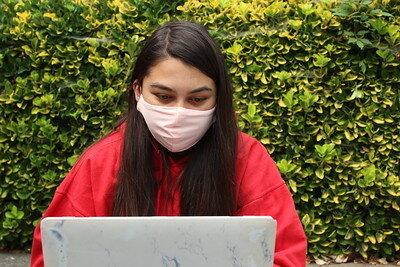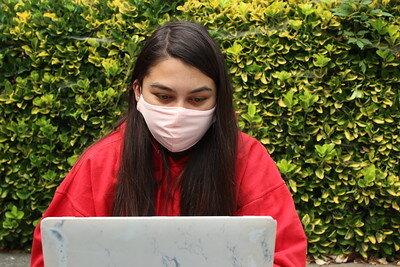Virtual classes are the new reality for most students right now, due to the Coronavirus pandemic. California residents were also hit with unhealthy air quality and intense heat waves. It seemed like nothing could get worse, but then the power outages began.
Power outages are the unforgiving enemy of online learning and they have caused a lot of difficulty for both students and professors already, in only the beginning of the 2020-2021 school year. Sonoma State University is almost completely virtual for the fall semester, keeping students and faculty tied to their computers, but also anxious about whether or not they will have power to attend the classes they are instructing or paying for.
Not being able to access canvas or zoom prevents students from staying updated on assignments and lectures. Likewise, professors may have to change their curriculum nights before class or quickly update their students that they won’t be able to attend class.
The blackouts are due to PG&E’s decision to shut off equipment, in an effort to minimize fire risk. They shut off power for about 17,000 customers and more than 40,000 people in Sonoma County, as well as shutting off power in thousands of other counties across the North Bay and the Sierra Nevada foothills.
Sonoma State student, Caitlin Aaron-Vadnais, lives on the top of Mount Veeder, where the 2017 Napa Fires took a heavy toll on the area and residents. “I’ve had my power shut off multiple times, and now our Wi-Fi connection cuts almost every week we’ve been in school. This makes online school extremely difficult. Luckily my teachers have been super cooperative and flexible throughout this whole process.” Without stable Wi-Fi connection, it is impossible to stay connected on zoom and to receive the education that is expected by students.
Communications professor at Sonoma State, Ethan DeSeife, has had to learn how to develop his in-person curriculum into a synchronous virtual classroom that is engaging and educational for his students. Living in Sonoma County, he was affected by the PG&E power outage. He had to send out a memo late-notice last Tuesday, informing his students that he would not be able to attend class because he would be without power.
Whenever a student emails me about a difficulty they are encountering, the only thing I can be is understanding. We are living in such a bizarro world that it’s ethically important for all us to be understanding,” DeSeife said. While the cooperation of professors at SSU is crucial during this hectic and frightening time, it still doesn’t make up for the lack of education that students are receiving. Students are paying for classes that they may not be able to attend due to wildfire evacuations and power outages.
Chicano and Latin Studies professor at SSU, Malinalli Lopez, was not affected by the PG&E power shutoff, but notes that they have affected some of her students. “That is why I created alternate assignments that can be completed without a lot of technology. For example, I may have them rent a DVD of a movie if they cannot stream it or pick an alternate movie to respond to that they do have access to. Challenges can be resolved generally by spending more time talking with students about what they are going through and helping them to design an individual plan for them that makes sense within the goals of the class.”
According to PG&E, on September 12, 2020, 99% of affected Sonoma County customers had their power back.
Internet access is essential to the success of students during the virtual 2020-2021 school year. Lack of access to an academic setting is already a struggle for many students, and if rolling blackouts continue throughout the state of California, students will face a huge disadvantage in their virtual learning environment.





![[Both photos courtesy of sonoma.edu]
Ming-Ting Mike Lee stepped in as the new SSU president following Sakakis resignation in July 2022](https://sonomastatestar.com/wp-content/uploads/2024/04/CC4520AB-22A7-41B2-9F6F-2A2D5F76A28C-1200x1200.jpeg)



























